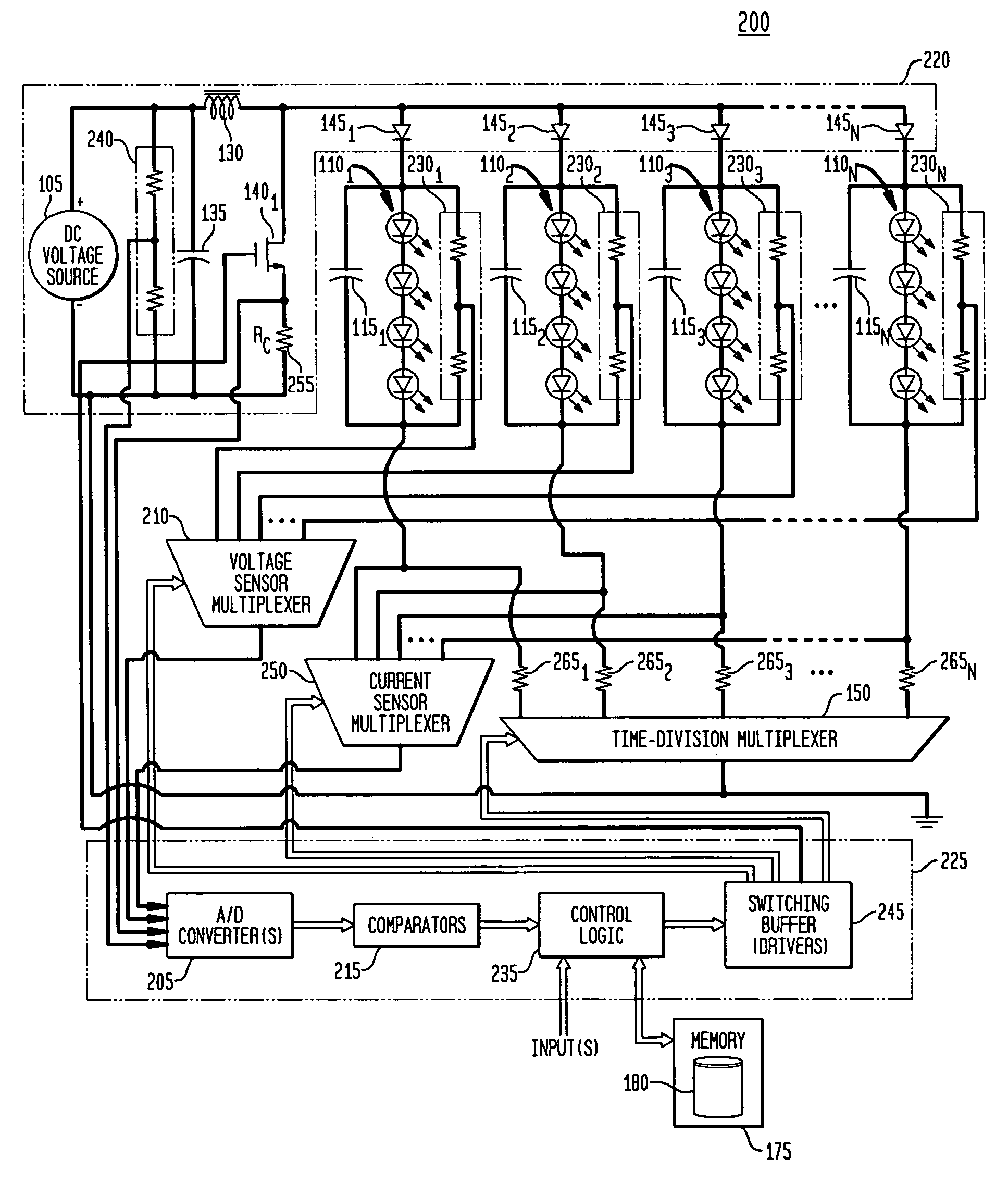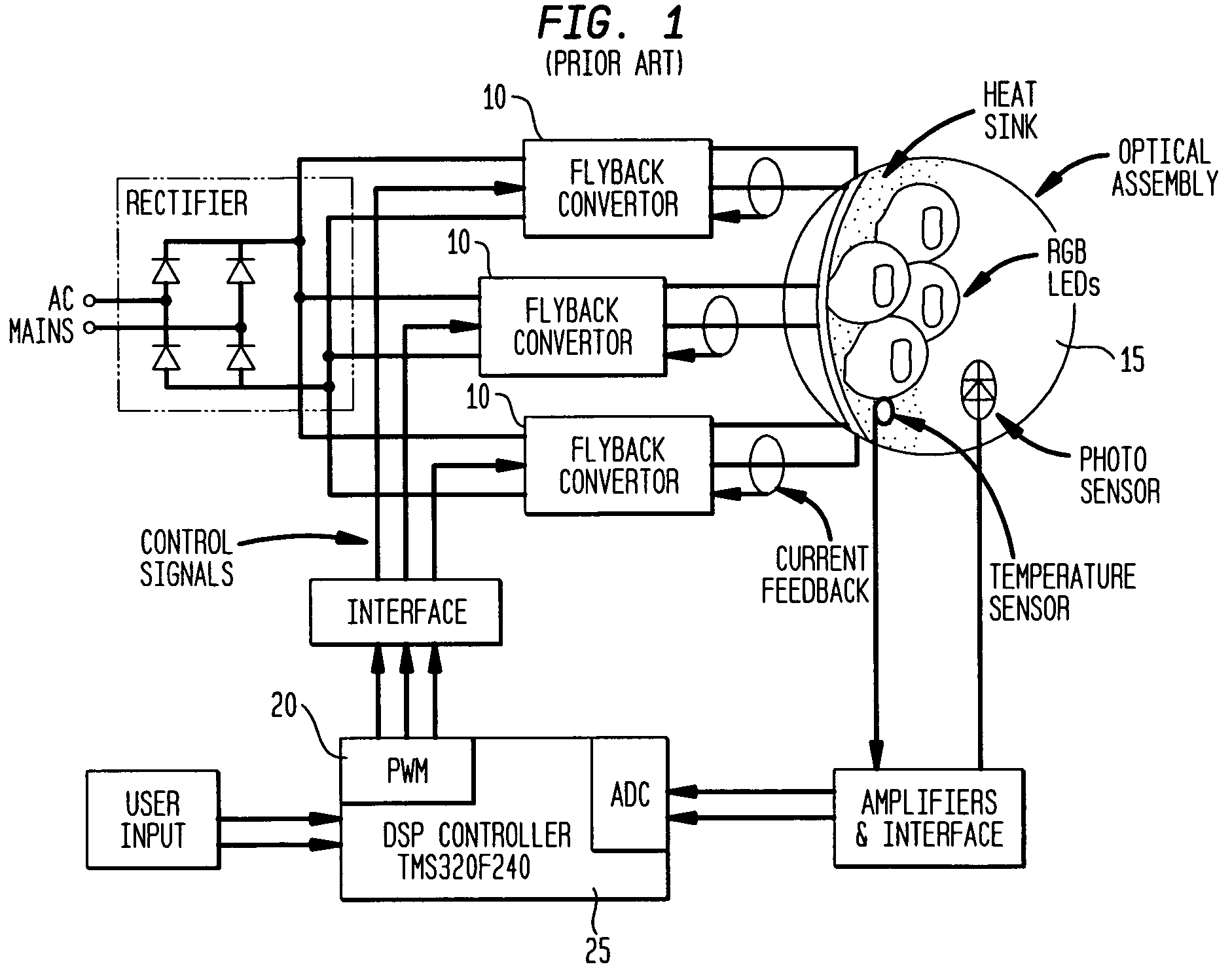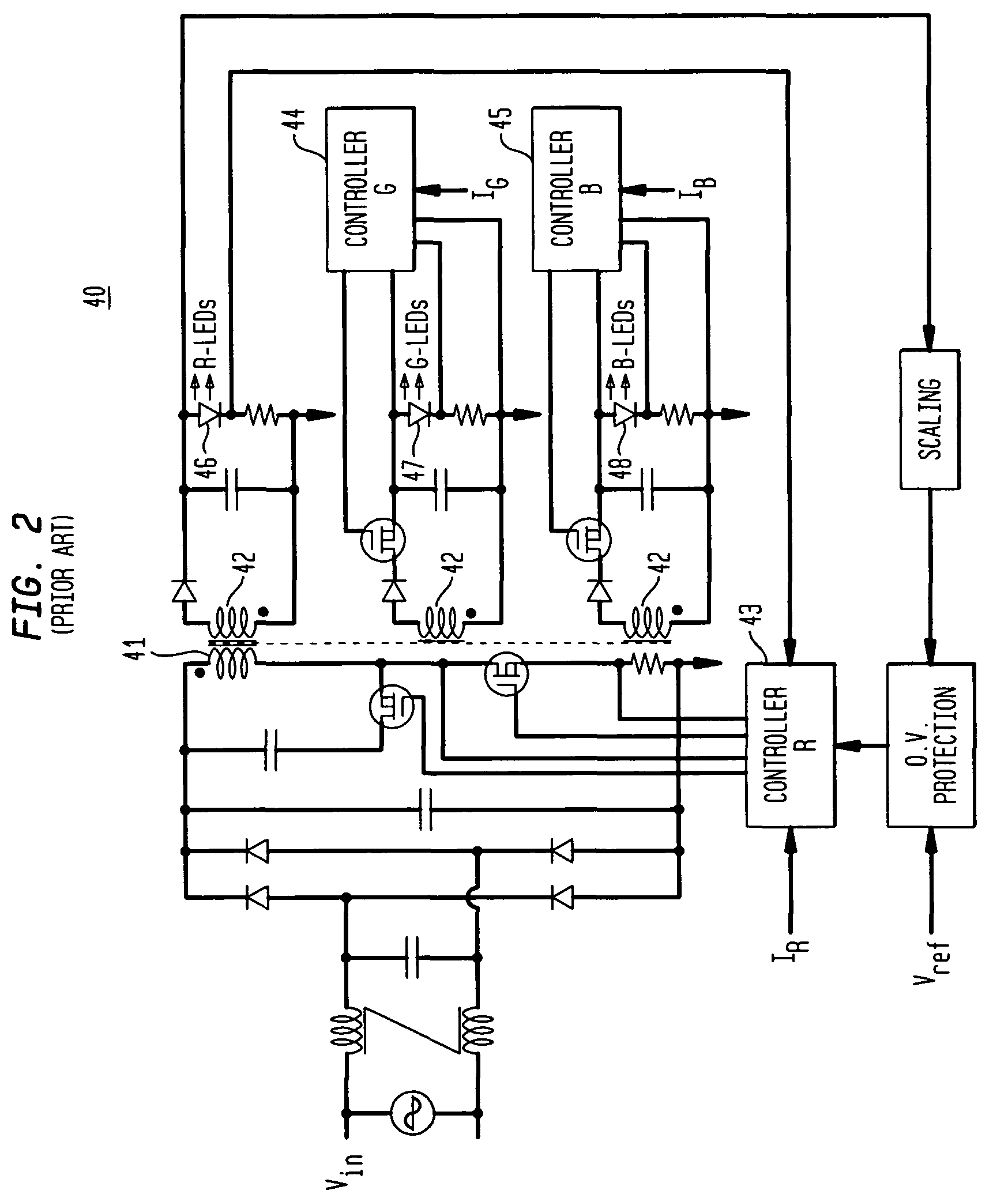Time division modulation with average current regulation for independent control of arrays of light emitting diodes
a technology of time division modulation and independent control, which is applied in the direction of electric variable regulation, process and machine control, instruments, etc., can solve the problems of low efficiency of power conversion, low efficiency of series pass current regulator, and multi-stage power, and achieve the effect of reducing the cost of controllers and faster response tim
- Summary
- Abstract
- Description
- Claims
- Application Information
AI Technical Summary
Benefits of technology
Problems solved by technology
Method used
Image
Examples
example 1
[0058]For a system having three series of LEDs 1101, 1102, and 1103, with average channel currents are initially set as Ic1=500 mA, Ic2=520 mA, and Ic3=480 mA, then Ic500+520+480=1500 mA. Assuming Tc=1000 μs and T=1 μs, under the control of the controller 125 directing switching through multiplexer 150, the power converter 120 will supply to each channel a current of 1500 mA for the run times
[0059]TQ1=500·10001500=333μs,TQ2=520·10001500=347μs,andTQ3=480·10001500=320μs
which will result in the following number of cycles of the power converter 120: m1=333, m2=347, and m3=320.
[0060]Continuing with the example, we may now suppose that for any of various reasons, such as a,change in junction temperature, a change in color output, etc., the current in channel one (series of LEDs 1101) only is to be adjusted to 275 mA, while the previous current levels are to be maintained in the remaining channels 2 and 3 (series of LEDs 1102 and series of LEDs 1103). Accordingly, the total av...
example 2
[0063]For a continuous conduction mode (“CCM”), as illustrated in FIG. 5,
[0064]Ic=Ip1i+Ip2i2·tr1T,
where[0065]Ip1i—First peak current, Channel i;[0066]Ip2i—Second peak current, Channel i; and[0067]tri—reset time, Channel i.
Two variables are introduced for ease of explanation and derivation of equations, as follows:
[0068]ai=Ip2iIp1i,
namely, the ratio of the second peak current to the first peak current for a selected ith channel, and
[0069]bi=triT,
namely, the ratio of the switch 140 reset time (i.e., off or open time) to the total cycle time, resulting in a first peak current for an ith channel of:
[0070]Ip1i=2Ic(1+ai)bi.
[0071]Another expression for the first peak current Ip1i is:
[0072]Ip1i=Ip2i+Vin·toniL
where[0073]Vin—Input voltage from DC voltage source 105;[0074]toni—on time, Channel i; and[0075]L—inductance value of inductor 130.
With substitutions
[0076]Ip1i=Vin·toni(1-ai)L
then one more expression for Ip1i current is
[0077]Ip1i=Ip2i+(Vouti-Vin)·tri...
example 3
[0084]For a discontinuous conduction mode (“DCM”), as illustrated in FIG. 6, peak current Ip1i is defined as
[0085]Ip1i=2IcTtri
Also, for a boost configuration using DCM:
[0086]Ip1i=Vin·toniL
and volt-seconds balance across inductor 130 is:
Vin·toni=(Vouti−Vin)·tri
The peak current Ip1i is then:
[0087]Ip1i=2Ic·VoutiVin
[0088]The technique of generating the value of the output voltage Vouti is the same as described above for CCM of operation. The boundary between CCM and DCM may be found analytically by solving the following equation, or by determining if the actual cycle time, after current discharge by the inductor 130 is completed, is equal to the set cycle time T:
[0089]T=2IcLVouti2Vin2(Voui-Vin)
[0090]The amplitude of voltage ripple ΔVi in a selected channel i is given by the following relationship, from which the capacitance values of capacitors 115 may be determined:
[0091]ΔVi=Ic·TQi2Ci·Tc
[0092]Referring again to FIG. 3, the controller 125 receives one or more inputs fr...
PUM
 Login to View More
Login to View More Abstract
Description
Claims
Application Information
 Login to View More
Login to View More - R&D
- Intellectual Property
- Life Sciences
- Materials
- Tech Scout
- Unparalleled Data Quality
- Higher Quality Content
- 60% Fewer Hallucinations
Browse by: Latest US Patents, China's latest patents, Technical Efficacy Thesaurus, Application Domain, Technology Topic, Popular Technical Reports.
© 2025 PatSnap. All rights reserved.Legal|Privacy policy|Modern Slavery Act Transparency Statement|Sitemap|About US| Contact US: help@patsnap.com



